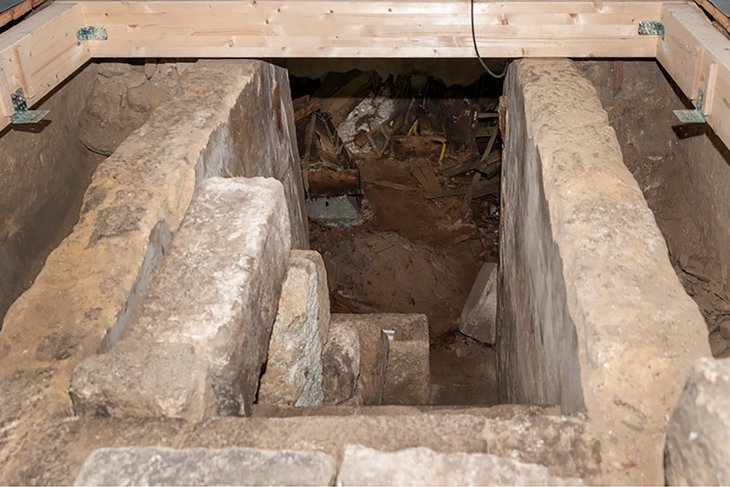The Enigma of Clérigos under review in the series of debates "An Object and Its Discourses"
Article

Since the first edition, in 2014, the annual program of the series of debates "One Object and Its Discourses per Week", Porto City Hall launches a challenge to the city, to reveal itself through weekly conversations around its heritage.
The initiative "One Object and Its Discourses per Week" embodied in a conceptual simplicity and organizational frugality has become a peculiar vehicle for reactivating heritage, for discovering the urban territory and connecting to our cultural identity, past and present.
The third edition of "An Object and its Discourses per Week" is today part of a particularly lively cultural project in the city of Porto.
Saturday 19th at 6 p.m., "One Object and Its Discourses per Week" debates the possible tomb belonging to architect Nicolau Nasoni, in the Clérigos Church.
The restoration works in the Cérigos Church have brought to light an eighteenth-century crypt containing 20 graves under the wooden floor near the main altar. One of them may belong to the famous Italian architect who, more than 250 years ago, designed the temple alongside the 76 meters high adjoin tower and the 240- steps spiral staircase.
The transcription of Nasoni's Death Registre indicates that he was buried in the Clérigos church but fails to mention the tomb's exact place.
Archaeologists, anthropologists and historians now work together to unravel the enigma of the Clérigos.
To unravel this mystery, the session of "One Object and Its Discourses per Week" invites Eugénia Cunha, the project coordinator and professor at the Department of Life Sciences of the Faculty of Sciences and Technology of the University of Coimbra (FCTUC), the Italian historian Giovanni Tedesco and Father Américo Aguiar, president of the Brotherhood of the Clérigos.
+ Info: "Um Objeto e Seus Discursos por Semana"
Tomb of Nicolau Nasoni (?)
19 November - 6 p.m.
Clérigos Church
Guests: Eugénia Cunha, Giovanni Tedesco and Father Américo Aguiar